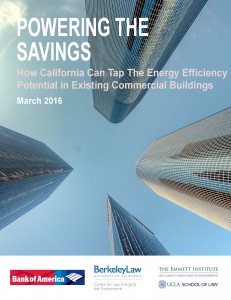The Sacramento Bee is running an op-ed today on line (and in print tomorrow) from me and infill builder Mott Smith in support of SB 827 (Wiener), to relax local zoning restrictions on housing near transit. The basic gist is that local control over land use has too often meant no new housing near prime transit areas, and it’s now time for the state to intervene directly.
As we summarize in the piece:
Change won’t come easy on hot-button land-use issues. But the status quo that so many groups defend drives the very problems we most need to solve – sprawl, environmental damage, transit disinvestment and gentrification.
We can only address these problems through bold action to boost California’s housing supply in the places we need it most. SB 827 is a long-overdue reform that will help the state rebuild its middle class, boost transit ridership and preserve the environment and quality of life that Californians cherish.
The bill will face some key tests in the coming weeks, particularly in the face of objections from advocates for low-income tenants. But the basic approach of SB 827 is right on and badly needed.
 California’s energy efficiency efforts for existing buildings have been treading water — when we need much faster progress. The Sacramento Bee ran an op-ed from me today on ways to address the challenge:
California’s energy efficiency efforts for existing buildings have been treading water — when we need much faster progress. The Sacramento Bee ran an op-ed from me today on ways to address the challenge:
A solution might be to emulate the success of rooftop solar. It has spread quickly in part because many companies offer no-money-down, long-term loans, backed by capital market investment. The same financing could work with energy-efficiency retrofits, since they also promise to reduce electricity bills at a steady rate.
So why is private capital sitting on the sidelines? Because, unlike with solar panels, we haven’t been able to reliably measure the energy we don’t use due to energy-efficiency measures in buildings – and provide the documented, standardized savings to attract large-scale financing.
Fortunately, technology is coming to the rescue. New software and methodologies can more accurately measure and verify the energy saved through efficiency improvements, and can account for a variety of factors, such as weather and building use.
But the state needs a uniform, state-sanctioned methodology and technology standard in order to encourage utilities to base incentives on the measured efficiency gains. Ultimately, we’d like to see utility procurement of energy savings the same way they procure generation resources, as San Diego Gas & Electric just did in procuring 18.5 megawatts of energy efficiency, working with Willdan Energy Solutions on specific retrofit methods for local buildings.
You can read more on this topic in our latest Berkeley/UCLA Law report, Powering the Savings. You can also register to attend our webinar on this topic on Monday, April 18th at 10am.


